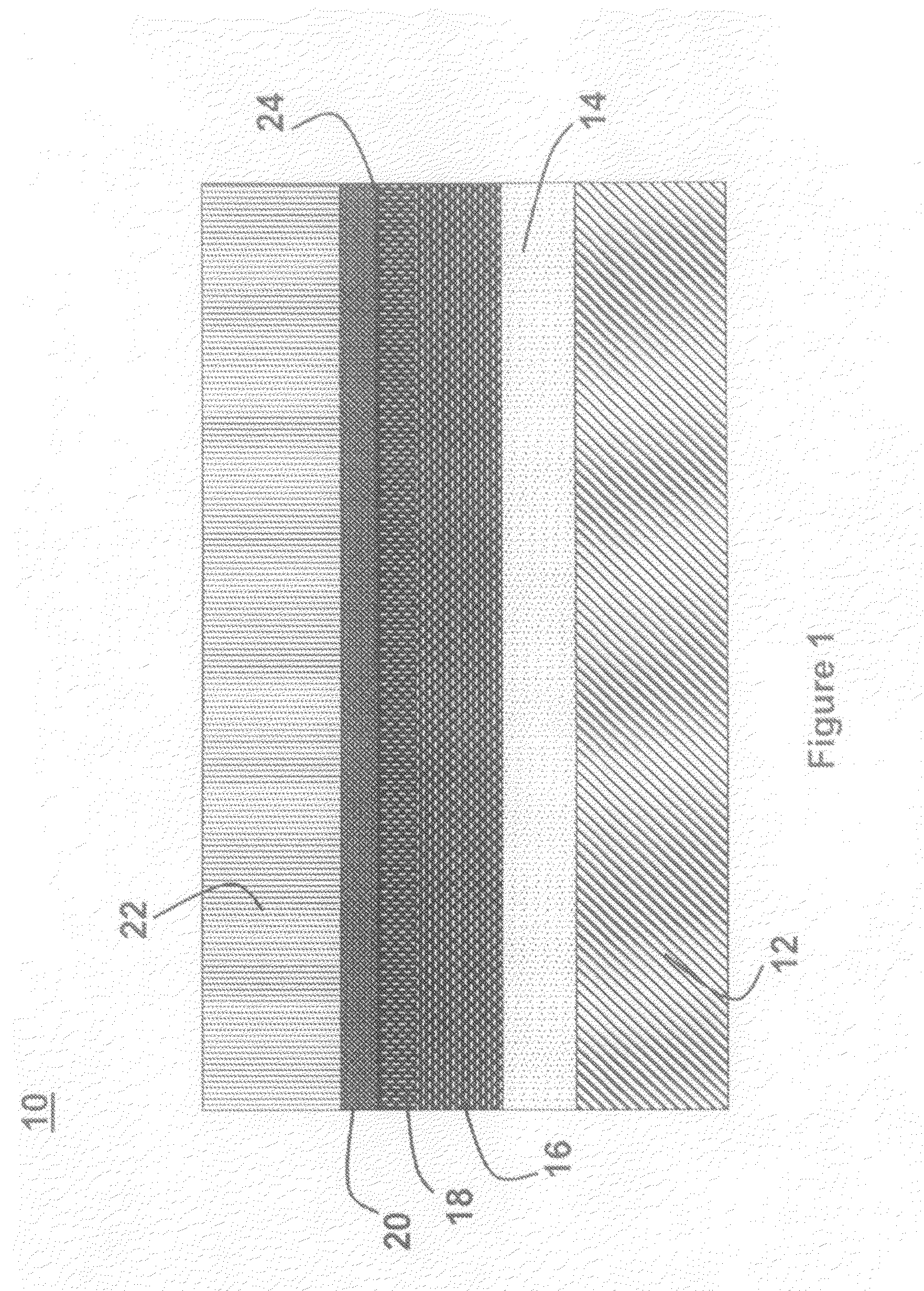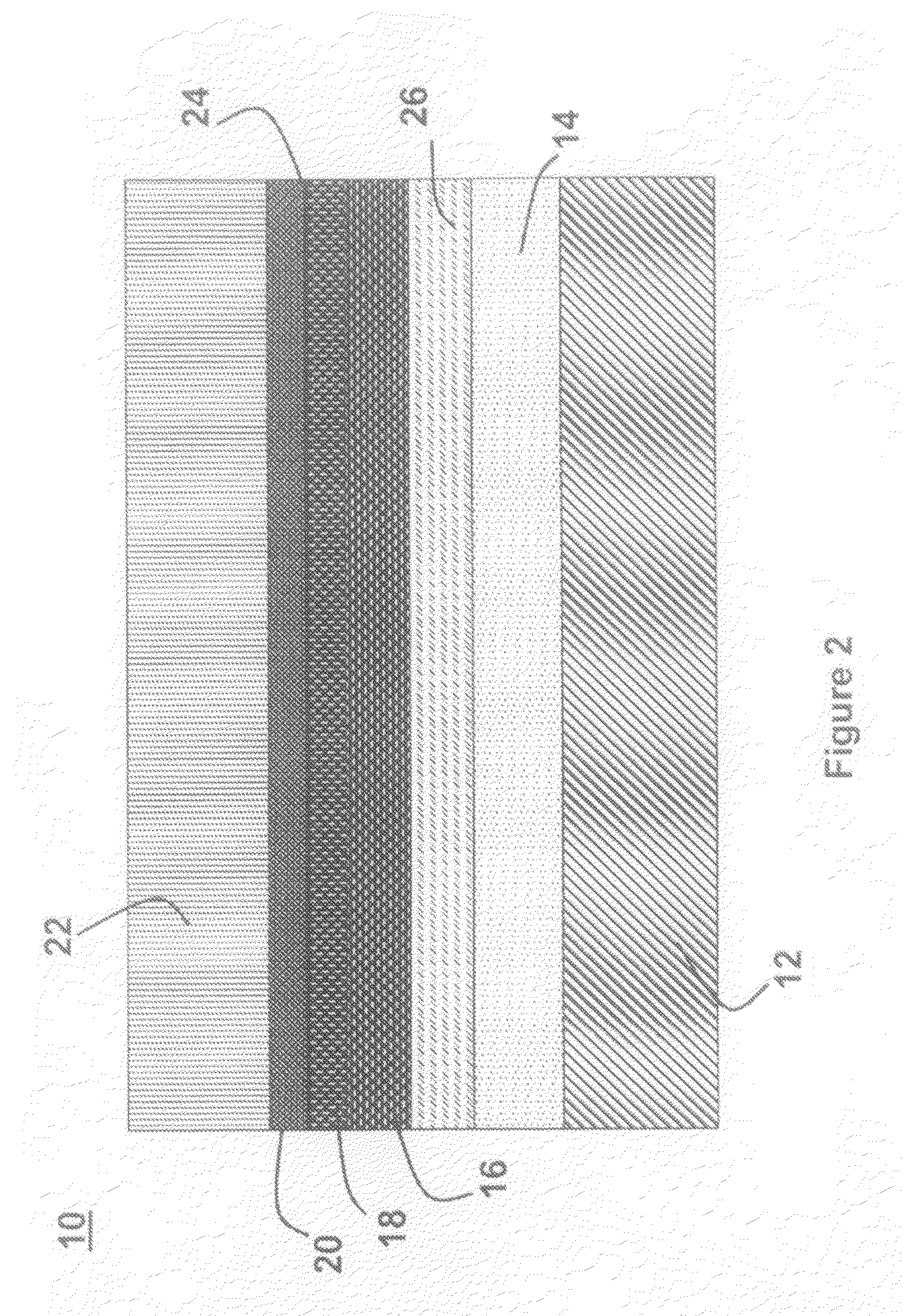MultiLayer Solid Electrolyte for Lithium Thin Film Batteries
a lithium thin film, multi-layer technology, applied in the direction of non-aqueous electrolyte cells, cell components, sustainable manufacturing/processing, etc., can solve the problems of safety disadvantages of lithium batteries when used as secondary (rechargeable) energy sources, limitations and teachings of related art, etc., to achieve efficient and rapid production and increase the resistance to cracking
- Summary
- Abstract
- Description
- Claims
- Application Information
AI Technical Summary
Benefits of technology
Problems solved by technology
Method used
Image
Examples
example
[0034]A coupon of type 430 stainless steel (an article of commerce also known to those of ordinary skill in the art as ASTM A176, an alloy having 16 wt. % chromium or more) is cut from sheet stock obtained from Teledyne Rodney Metals, Inc., New Bedford, Mass. The coupon is prepared for use as an anode current collector by washing the stainless steel in a detergent solution, rinsing with deionized water, followed by an additional ethyl alcohol rinse, and drying in room air. The detergent employed is Alkanox, a commercial detergent for cleaning laboratory glassware, but any neutral detergent formulated for such purpose can alternatively be employed.
[0035]Thus prepared, to lay down a thin, stable solid-electrolyte layer, the anode current collector layer is placed into a vacuum chamber containing a target of Li3PO4. The chamber is evacuated to 10−5 torr and a sub-stoichiometriclithium phosphorous oxynitride film of 10.0 nm-thick electrolyte layer is formed upon the exposed face of the ...
PUM
 Login to View More
Login to View More Abstract
Description
Claims
Application Information
 Login to View More
Login to View More - R&D
- Intellectual Property
- Life Sciences
- Materials
- Tech Scout
- Unparalleled Data Quality
- Higher Quality Content
- 60% Fewer Hallucinations
Browse by: Latest US Patents, China's latest patents, Technical Efficacy Thesaurus, Application Domain, Technology Topic, Popular Technical Reports.
© 2025 PatSnap. All rights reserved.Legal|Privacy policy|Modern Slavery Act Transparency Statement|Sitemap|About US| Contact US: help@patsnap.com



